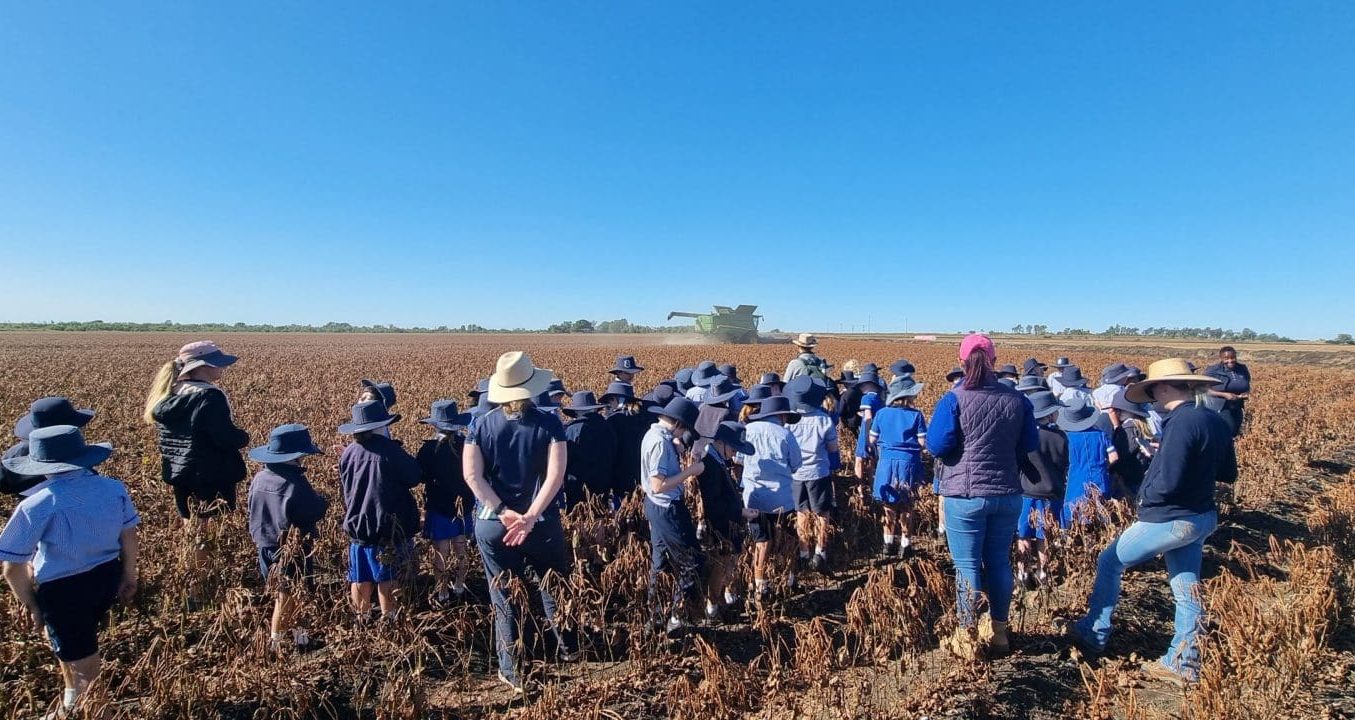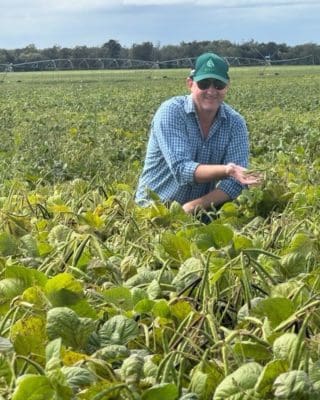
Primary school students had the opportunity to witness a mungbean harvest firsthand at a property near Emerald. Photo: Renee Anderson
AUSTRALIA’S mungbean harvest is almost complete, with growers on track to deliver above-average production of around 120,000 tonnes, according to industry estimates.
Central Queensland’s mungbean crop, which is still being harvested, is expected to deliver standout results, with growers reporting strong yields and good quality across the region.
Quality has been patchy across southern Queensland and northern New South Wales, with rain during the flowering stage taking a toll on grades delivered to processors.
Despite these concerns in major growing regions, the national mungbean crop is still expected to be slightly higher than last year’s total, and well above the industry average of 85,000-100,000t.
Industry forecasts had pegged the area planted to mungbeans at 130,000-150,000ha in March, with planting continuing in parts of CQ.
Magnificent CQ crops
Weedsmart northern extension agronomist Paul McIntosh said CQ had received welcome rain in February which kicked off strong plantings in the region.
“They had a dry time in October, November and December then they had the rain, four or five inches,” Mr McIntosh said.
“It was great timing and away they went and planted buckets of mungbeans.”
He said CQ was currently harvesting some “magnificent crops” with positive yields “on average, on big dryland paddocks of 3 tonne to the hectare”.
Woods Group grain accumulator Clare Muirhead said CQ had been the “common denominator” in the positive reports surrounding this season’s mungbean harvest.
“The quality has been really consistent, and we’ve seen a lot of processing beans come out of Central Queensland,” Ms Muirhead said.
She said there were hopes this season’s strong performance would encourage more growers in CQ to keep planting mungbeans in the years ahead.
“We certainly feel like that area has a future with mungbeans.
“A lot of acres are obviously taken up by sorghum, but they do look for an alternative, and this year I think because it has gone quite well…mungbeans might fill that spot.”
Mixed NSW, SQld
Results were less consistent for growers in NSW and southern Qld, where April rain and subsequent falls disrupted crops in the lead-up to and during harvest.
These crops, typically planted between November and February, first struggled through dry summer conditions before being hit by consistent rainfall from April onwards.
Australian Mungbean Association vice president and Woods Group accumulation and sales manager Steve Foran said this resulted in a wide variety of grades coming into processors.
“Across all districts, there has been a mixed bag of quality from really good processing down to below manufacturing,” Mr Foran said.
Mr McIntosh said the quality and yields were “driven by the rain”.

AMA President James Hunt inspecting a thriving Brolga mungbean crop on the Darling Downs. Photo: AMA
He said when the rain hits mature crops, there was a risk of mould and pod losses, which resulted in significant downgrades.
Ms Muirhead said while there were decent volumes of crops that fell below manufacturing grade, there were still markets available for these lower-quality beans.
“NSW had more untimely rainfall on their crop, but we are still able to find a market for crops.
“If it doesn’t meet manufacturing, we are still able to price it and take delivery of it…so those below manufacturing grade, which we did see a lot of come out of NSW.”
New variety successes
In April, the National Mungbean Improvement Program released two new varieties, the broadly adapted Brolga and Kookaburra, suited to key mungbean growing regions of NSW and southern Qld.
While the varieties will be available to growers for the 2025-26 season, Mr McIntosh said there were some commercial crops which resulted in some very positive results.
“The new Brolga variety is doing exceptionally well this year.
“We had some commercial areas right through from Clermont into southern Queensland and it performed very well against the other large green shiny varieties.”
It is anticipated that the Brolga variety will eventually take the place of Jade, the dominant variety which accounts for 70 percent of plantings.
Grain Central: Get our free news straight to your inbox – Click here

HAVE YOUR SAY